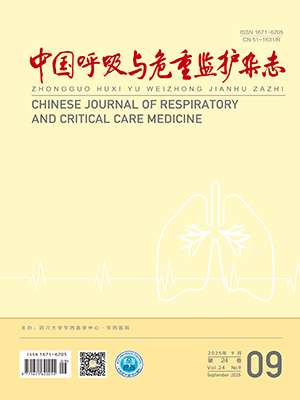| 1. |
Ballard C, Gauthier S, Corbett A, et al. Alzheimer’s disease. Lancet, 2011, 377: 1019-1031.
|
| 2. |
Joe E, Ringman JM. Cognitive symptoms of Alzheimer’s disease: clinical management and prevention. BMJ, 2019, 367: I6217.
|
| 3. |
Sivathamboo S, Perucca P, Velakoulis D, et al. Sleep disordered breathing in epilepsy: epidemiology, mechanisms and treatment. Sleep, 2018, 41(4): 1-15.
|
| 4. |
中国医师协会睡眠医学专业委员会. 成人阻塞性睡眠呼吸暂停多学科诊疗指南. 中华医学杂志, 2018, 98(24): 1902-1914.
|
| 5. |
Siachpazidou DI, Stavrou VT, Astara K, et al. Alzheimer’s disease in patients with obstructive sleep apnea syndrome. Tanaffos, 2020, 19(3): 176-185.
|
| 6. |
Joseph S, Zuriqat M, Husari A. Sustained improvement in cognitive and emotional status of apneic patients after prolonged treatment with positive airway pressure. South Med J, 2009, 102(6): 589-594.
|
| 7. |
Dubois B, Feldman H H, Jacova C, et al. Research criteria for the diagnosis of Alzheimer's disease: revising the NINCDS-ADRDA criteria. Lancet Neurology, 2007, 6(8): 734-746.
|
| 8. |
中华医学会呼吸病学分会睡眠呼吸障碍学组. 阻塞性睡眠呼吸暂停低通气综合征诊治指南(2011修订版). 中华结核和呼吸杂志, 2012, 35(1): 9-12.
|
| 9. |
Ju YES, Finn MB, Sutphen CL, et al. Obstructive sleep apnea decreases central nervous system-derived proteins in the cerebrospinal fluid. Ann Neurol, 2016, 80(1): 154-159.
|
| 10. |
Liguori C, Agostino Chiaravalloti A, Izzi F, et al. Sleep apnoeas may represent a reversible risk factor for amyloid-β pathology. Brain, 2017, 140(12): e75.
|
| 11. |
Daulatzai MA. Evidence of neurodegeneration in obstructive sleep apnea: relationship between obstructive sleep apnea and cognitive dysfunction in the elderly. J Neurosci Res, 2015, 93(12): 1778-1794.
|
| 12. |
Xie LL, Kang HY, Xu QW, et al. Sleep drives metabolite clearance from the adult brain. Science, 2013, 342(6156): 373-377.
|
| 13. |
张立芳, 李博, 刘煜, 等. 一夜持续正压呼吸道通气治疗对阻塞性睡眠呼吸暂停低通气综合征患者睡眠结构的影响. 医学综述, 2013, 19(8): 1496-1498.
|
| 14. |
Bero AW, Bauer AQ, Stewart FR, et al. Bidirectional relationship between functional connectivity and amyloid-β deposition in mouse brain. J Neurosci, 2012, 32(13): 4334.
|
| 15. |
White KG, Ruske AC. Memory deficits in Alzheimer's disease: the encoding hypothesis and cholinergic function. Psychon Bull Rev, 2002, 9(3): 426-437.
|
| 16. |
Richards KC, Gooneratne N, Barry Dicicco B, et al. CPAP adherence may slow 1-year cognitive decline in older adults with mild cognitive impairment and apnea. J Am Geriatr Soc, 2019, 67(3): 558-564.
|
| 17. |
Berlowitz DJ, Shafazand S. CPAP and cognition OSA (APPLES). J Clin Sleep Med, 2013, 9(5): 515-516.
|
| 18. |
Kahya M, Vidoni E, Burns JM, et al. The relationship between apolipoprotein ε4 carrier status and sleep characteristics in cognitively normal older adults. J Geriatr Psychiatry Neurol, 2017, 30(5): 273-279.
|




